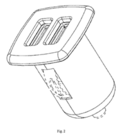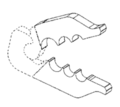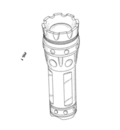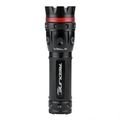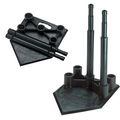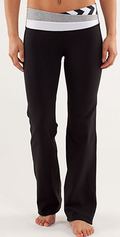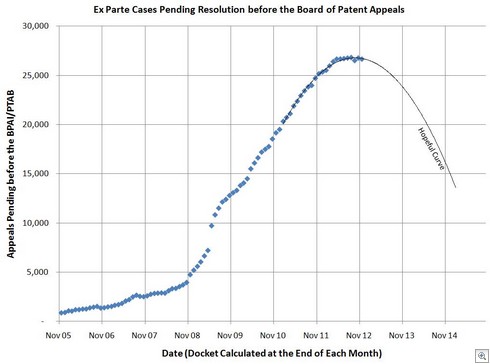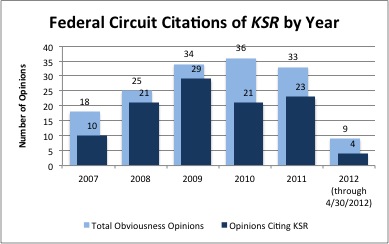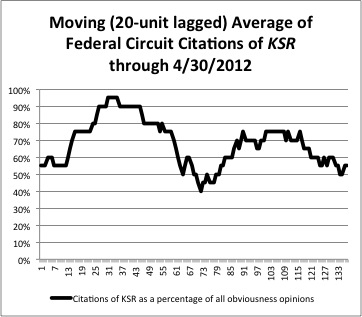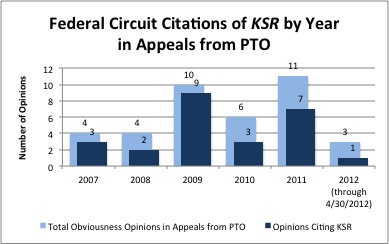December 2012
Carnegie Mellon v. Marvell: Another $1b verdict.
By Dennis Crouch

Marvell's stock price plunged about 10% following news that a jury had awarded well over $1 billion patent infringement verdict to Carnegie Mellon University. Download MarvellVerdict. The verdict is based upon finding of direct literal infringement of claim 4 of Patent No. 6,201,839 and claim 2 of Patent No. 6,438,180. The CMU hometown Pittsburgh jury also found that Marvell induced infringement by encouraging customers to use its chips. Regarding validity, the jury held that the asserted claims were neither anticipated nor obvious. One of the key pieces of evidence in the trial was an old email from a Seagate engineer noting that the CMU invention went well beyond the current state of the art. (Of course, that email was focused on advances found in the disclosure rather than the broad claims asserted by CMU.) Seagate was apparently happy to provide that document to be used against its market competitor. It is that same Seagate engineer's prior patent application that served as the core of Marvell unsuccessful invalidity argument.
An interesting element of the verdict involved particular willfulness questions. The jury particularly held that (1) Marvell knew of the asserted patent before the lawsuit; (2) had no reasonable defense for its actions; and (3) knew or should have known that its actions were infringing. The verdict did not, however, ask whether the action was "willful." CMU will ask the court to rely upon those answers to treble the damage award. If the damage award is trebled (tripled) and interest added, the award will be roughly equivalent to Marvell's $3.8b market valuation. (The award is larger than CMU's current endowment.) In the initial complaint, CMU also requested attorney fees and a permanent injunction.
This is the second billion dollar judgment against a Quinn Emanuel client awarded in the past few months.
Marvell has announced that it will prevail on appeal. In a pretrial ruling, district court judge Nora Fischer denied Marvell's motion for summary judgment of anticipation, but noted that it was a "close call" based upon her construction of the asserted claims. Marvell did not exercise its authority to seek a reexamination of the patent at the USPTO. Over the next six months, both parties will file and respond to post-verdict motions. Judge Fischer announced her intention to make a final ruling in the case in May 2013. If the verdict is confirmed by Judge Fischer, Marvell will then have an opportunity to appeal after posting a "supersedeas bond." If the damage award is roughly equivalent
The asserted patent claims are basically signal processing logic algorithms for determining the value of items coming from a computer memory signal. This is necessary because the "0" and "1" that we normally talk about for binary digital signals is not actually accurate. In particular, the invention indicates that you should apply a "signal dependent" function to calculate the value as a way to overcome noise in the signal. Apparently a key distinguishing factor from the prior art is that the decoding functions used are "selected from a set of signal-dependent functions." The asserted claims do not identify the particular functions used, only that functions are used.
The two infringing claims are as follows:
Claim 4 of US Patent 6,201,839:
A method of determining branch metric values for branches of a trellis for a Viterbi-like detector, comprising:
selecting a branch metric function for each of the branches at a certain time index from a set of signal-dependent branch metric functions; and applying each of said selected functions to a plurality of signal samples to determine the metric value corresponding to the branch for which the applied branch metric function was selected, wherein each sample corresponds to a different sampling time instant.
Claim 2 of US Patent 6,438,180 (Claim 2 is dependent from Claim 1 and I combined the two together):
A method of determining branch metric values in a detector, comprising:
receiving a plurality of time variant signal samples, the signal samples having one of signal-dependent noise, correlated noise, and both signal dependent and correlated noise associated therewith; selecting a branch metric function at a certain time index; and applying the selected function to the signal samples to determine the metric values, wherein the branch metric function is selected from a set of signal-dependent branch metric functions.
Folks focused on subject matter eligibility issues will notice the obvious problems raised by the asserted claims.
Technical Amendment H.R. 6621
H.R. 6621 has passed in the Senate, but only after the Senate eliminated section (m) of the bill that would have brought to light information regarding the hundreds of "pre-GATT" patent applications that have been pending since 1995. According to Capitol Hill rumors, well known patentee Gil Hyatt was able to convince one Senator to put a hold on the bill that would have eliminated possibility of passage barring the amendment. Hyatt apparently has a number of applications pending that claim architecture and logic design of very basic integrated circuits. There are several hundred of these pre-GATT applications pending. The majority are apparently ones delayed because of Department of Defense secrecy orders. However, a substantial number would be properly classified as submarine patents whose existence is currently unknown but that potentially claim a broad scope of coverage that could potentially cover elements of an entire mature industry (such as integrated circuits). Because the Senate amended the bill, it must be passed again by the House and signed by the President before conclusion of the term.
EFF: Limit Software Patents
Guest Post by Julie Samuels. Samuels holds an endowed chair at EFF aptly named the Mark Cuban Chair to Elimiate Stupid Patents. EFF's brief in the CLS Bank case is available here: /media/docs/2012/12/eff–iso-cls.pdf.
Since the Supreme Court’s 2010 Bilski ruling, the Federal Circuit has been consistent on only one point in its § 101 jurisprudence—and that’s on being inconsistent. In the face of the Federal Circuit’s failure to provide a workable § 101 standard, the Supreme Court issued its unanimous ruling in Mayo v. Prometheus, essentially telling the Federal Circuit to take the patentable subject matter inquiry seriously. Yet the Federal Circuit paid no heed when it issued ruled in CLS Bank v. Alice, all but ignoring the Supreme Court (for many of us court watchers, the Federal Circuit’s failure to address Mayo was shocking; even Judge Prost, in her dissent, admonished the majority for “fail[ing] to follow the Supreme Court’s instructions—not just in its holding, but more importantly in its approach.”).
So it really was no surprise when the Federal Circuit agreed to take CLS en banc. We, along with many others, hope that this case would provide the Court an opportunity to head the Bilski Court’s warning that:
The Information Age empowers people with new capacities to perform statistical analyses and mathematical calculations with a speed and sophistication that enable the design of protocols for more efficient performance of a vast number of business tasks. If a high enough bar is not set when considering patent applications of this sort, patent examiners and courts could be flooded with claims that would put a chill on creative endeavor and dynamic change. (130 S. Ct. at 3229).
As currently interpreted, § 101 leaves parties unable to discern a patent’s metes and bounds or assess its validity, making inadvertent infringement an unfortunate cost of doing business. This has led to a dangerous and dramatic increase in patent litigation, particularly surrounding business method patents or those covering software. For better or worse (and I think worse), the major uptick in these cases involved non-practicing entities. Some data that we included in our amicus brief filed in CLS Bank:
- From 200-2002, NPE litigation accounting for only about five percent of patent litigation;[1] in 2007 that figure was 22 percent and in 2011 it was 40 percent.[2]
- Litigation surrounding software patents has also greatly increased:
- For the first time in 2011, spending by both Apple and Google on patents exceeded the firms’ spending on new product research and development.[4]
- NPEs now disproportionately target small companies; at least 55% of unique defendants sued by NPEs make under $10 million a year.[5]
These statistics are a direct result of the legal instability surrounding § 101. One way to stem this problem is to create incentives for those facing litigation (or litigation threats) to pursue their meritorious defenses of noninfringement and invalidity. Section 101 could play that role, in fact, the Mayo Court seemed to state as much: “to shift the patent-eligibility inquiry entirely to these late sections [§§102, 103, 112] risks creating significantly greater legal uncertainty, while assuming that those sections can do work that they are not equipped to do.” 132 S. Ct. at 1304.
Yet no version of recent § 101 jurisprudence offers much hope of settling the law. Instead, we recommended in our brief (filed along with Public Knowledge) that the Federal Circuit take another route and adopt a stricter construction of § 112(f), as recently proposed by Prof. Mark Lemley. Specifically, instead of attempting to figure out whether a broad, functional claim is abstract or not, a court may first use § 112(f) to narrow the claim to the structures and their equivalents recited in the patent and then, if questions remain, make a § 101 inquiry.
While § 112(f) has traditionally been applied to apparatus claims, it’s clear that Congress intended it to apply to method claims as well. Despite this, software patents often do not detail actual algorithms or explain how to actually carry out the methods they attempt to claim; as such they should be indefinite under cases like Aristocrat Techs. v. Int’l Game Tech. If the claims do specify the algorithms, then the § 101 inquiry will be limited to those algorithms and their equivalents. These questions—of whether §112(f) applies; if it does, how the claims should be limited; and then if § 101 permits that narrowed claim—could all be accomplished at early stages of litigation, before expensive discovery and motion practice.
[1] James Bessen, Jennifer Ford and Michael Meurer, The Private and Social Costs of Patent Trolls, Boston Univ. School of Law, Working Paper No. 11-45, 2011 (“Bessen 2011”), at 6.
[2] Sara Jeruss, Robin Feldman & Joshua Walker, The America Invents Act 500: Effects of Patent Monetization Entities on US Litigation (2012) at 5, 25.
[3] James Bessen, A Generation of Software Patents, Boston Univ. School of Law, Working Paper No. 11-31 (June 21, 2011), at 19
[4] Zak Islam, Smartphone Industry Spent $20 Billion on Patents in 2011, tom’s hardware (October 9, 2012), http://www.tomshardware.com/news/Patents-Smartphone-Apple-Google-Motorola,18231.html
[5] Colleen Chien, Startups and Patent Trolls, Santa Clara Univ. School of Law, Accepted Paper No. 09-12 (September 28, 2012)
Expediting Prosecution: Comparing Track 1 Prioritized Examination, Accelerated Examination, the Patent Prosecution Highway, and Petitions to Make Special Based on Age
Max Colice, Matthew A. Smith, and Andrew Cheslock, Foley & Lardner LLP[1]
The USPTO’s new Track 1 Prioritized Examination program allows an applicant to reach final disposition (allowance, final rejection, abandonment) within 12 months of filing. To qualify for this program, an applicant must file a simple, one-page petition and a $4800 petition fee ($2400 for small entities). According to the USPTO’s Track 1 website, the current pendency to final disposition is just over 5 months.[2] But how does Track 1 compare to the USPTO’s other programs for expediting examination?
Right now, the USPTO offers three other programs for expediting examination of utility applications: Accelerated Examination (AE), the Patent Prosecution Highway (PPH), and Petitions to Make Special based on an applicant’s age or health. Like Track 1, AE’s goal is to reach final disposition within 12 months of filing. Unlike Track 1, an applicant pays only a nominal petitions fee, but must conduct a search and submit an accelerated examination support document characterizing the search results. The PPH, in contrast, does not require a fee or a support document; rather, the applicant files a PPH request based on an allowance or favorable search report from a corresponding foreign or PCT application (if necessary, the U.S. claims must be amended to “sufficiently correspond” to the allowable foreign claims.) According to the USPTO, examination of a PPH case should begin about 2–3 months after the PPH request is granted.[3] And unlike the Track 1 and AE petitions, which must be filed with the application, a PPH request can be filed any time before examination begins. Petitions to Make Special based on an applicant’s age or health are free, but apply only to those applicants older than 65 or in very poor health.
Which of these programs is the best? To answer that question, we reviewed approximately 350 applications filed in these programs since 2006 (the Track 1 applications date only from that program’s institution on September 26, 2011.) We then determined the average and median times from effective filing date to date of allowance for the allowed applications in our sample, plus the standard deviation in these times:
Days from Effective Filing Date to Allowance
|
Program |
Mean |
Median |
Standard Deviation |
|
Track 1 Prioritized Examination |
184 |
207 |
101 |
|
Accelerated Exam (AE) |
317 |
248 |
292 |
|
Patent Prosecution Highway (PPH) |
565 |
543 |
215 |
|
Petition to Make Special Based on Age |
806 |
675 |
575 |
We found that the Track 1 applications were allowed on average 184 days after the application’s effective filing date, compared to 317 days for AE, 565 days for the PPH, and 806 days for applications made special based on an applicant’s age.[4] For reference, the average application pendency across non-expedited applications in 2011 was about 1240 days (1022 days when counting RCEs as new filings).[5] The data were clear: for the allowed applications in our sample, Track 1 was the fastest.
But that is not the whole story. Despite its relatively high up-front cost, Track 1 applications may also be the least expensive to prosecute, especially for small entities. To estimate prosecution costs, we tabulated the mean number of office actions for the allowed applications in our sample. Multiplying the mean number of office actions by an estimated cost to the applicant for preparing and filing a response and adding the extra petition costs, if any, yields an “expectation cost” for each program. We did not account for RCE costs because there were less than 3 office actions, on average, per application in each program.
We found that, on average, there were only 1.2 office actions to allowance for the Track 1 applications, 1.3 office actions for PPH applications, 1.7 office actions for AE applications, and 2.2 office actions for applications made special based on an applicant’s age. (For reference, the USPTO averages about 2.7 office actions per final disposal for other cases.[6]) If the cost of responding to an office action is about $2600 per recent AIPLA data,[7] then the expectation cost of filing and prosecuting a Track 1 application at large entity rates is $7920 (i.e., 1.2 × 2600 + 4800). In contrast, the expectation cost of filing and prosecuting an AE application is about $4420 plus the cost of conducting the pre-examination search and preparing the AE support document. If the cost of conducting the search and preparing the support document exceeds $3500, then filing and prosecuting a Track 1 application should, on average, cost less than filing and prosecuting an AE application.
In fact, the benefit of Track 1 for small entities may be even greater. At small entity rates, the expectation cost of filing and prosecuting a Track 1 application is only $5520. This means that Track 1 should be less expensive, on average, than AE if the cost of the search and the support documents (which does not change with entity size) is more than $1100 (the difference between the $5520 Track 1 expectation cost for small entities and the $4420 expectation cost for prosecuting an AE application). According to the AIPLA 2011 Economic Survey, a novelty search is about $2000, which suggests that Track 1 may be less expensive on average than AE for small entities.
For small entities, a Track 1 application has a good chance of being cheaper to prosecute than a regular application. Assuming 2.7 office actions on the normal track at a cost to the applicant of $2600 per office action, the expectation cost of prosecuting a normal application is $7020. Conversely, the expectation cost of prosecuting a Track 1 application for a small entity is only $5520—including the Track 1 petition fee. Of course, the applicant should expect to incur all of the costs for a Track 1 application within 12 months (or less) instead of over 2–3 years (or more) as would be the case with a normal application.
In sum, Track 1 examination appears to be significantly faster on average than the USPTO’s other programs for expediting examination. Surprisingly, prosecuting a Track 1 application may cost less than prosecuting an AE application even accounting for the large fee for participating in the Track 1 program.
[1] The authors are attorneys at Foley & Lardner LLP. This article reflects the views of the authors and not necessarily the views of Foley & Lardner LLP or its clients.
[2] http://www.uspto.gov/patents/init_events/Track_One.jsp
[3] http://www.uspto.gov/patents/init_events/pph/pphbrochure.pdf
[4] For comparison purposes, current Director Kappos recently quoted an average of 153 days to “final disposition” for Track 1 cases, with an allowance rate of about 50%. The term “final disposition”, of course, includes a variety of actions other than the allowances in our study.
[5] https://patentlyo.com/patent/2012/03/total-patent-application-pendency.html
[6] http://www.uspto.gov/ip/global/patents/PPH_slides_for_WS_RT_(2).ppt
[7] The AIPLA 2011 Economic Survey gives response costs, in 2010, of $3000 for relatively complex electrical, computer, biotech and chemical cases; $2500 for relatively complex mechanical cases; and $1850 for minimally complex cases.
Countdown to March 16, 2013
by Dennis Crouch
New patent applications filed three months from now will fall under the US new First-to-File regime created by the America Invents Act of 2011. Those applications will no longer be able to claim invention-date priority, will have much more limited pre-filing grace period, will be subject to prior user rights and broad post-grant review, and can be invalidated by public uses and sales of similar inventions in foreign countries. On the other hand, absent a derivation problem, secret prior invention or reduction to practice by a third party will no longer be relevant to patentability.
How are you preparing for this March 16, 2013 changeover?
Patents Issued Per Year
This includes final numbers for 2012
Try Patently-O Via E-Mail
More than 20,000 individuals have opted-in for our daily Patently-O email – a free service, no charge, gratis. Merry Christmas! I use Google's Feedburner service to do the actual distribution. Sign-up here: http://feedburner.google.com/fb/a/mailverify?uri=PatentlyO. I keep a list of folks who have signed up, but I never distribute the list.
If you want to follow using an RSS Feed, use these:
- Patent Law Blog: http://feeds.feedburner.com/PatentlyO
- Patent Law Jobs: http://feeds.feedburner.com/PatentLawJobs
- Comments: http://feeds.feedburner.com/PatentComments
– Dennis
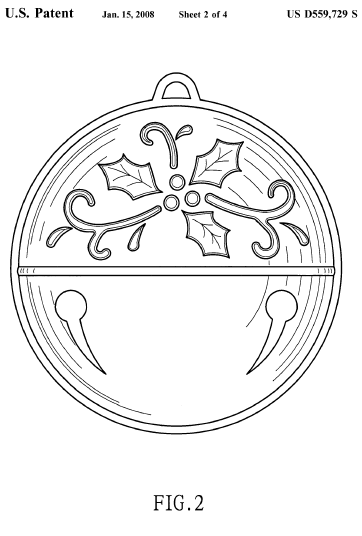
Recent Design Patent Litigation
By Dennis Crouch
- D. 624,501 –a dual USB adapter owned by Ever Win International. Ever Win's product is available from Amazon for $20 and is allegedly being infringed by similar devices being sold at CVS and other locations.
-
Mr. BD Kidd has sued Home Depot and others for infringing his Patent No. D.646,537 covering a crimping tool that fits in your pocket.
- Nebo's No. D.659,869 covers these funky flashlights that are allegedly being infringed.
- Jugs Inc. owns No. D.451,566 that covers a five-position batting practice tee that is allegedly being infringed by Wilson's and others. Wilson's has asked for a declaratory judgment of invalidity alleging that it began using its version of the product (shown in yellow) in 1996, five years before the patent's 2001 priority date.
- Oakley has again asserted its D. 397,350 that covers eyeglass fronts.
- Lulumon has asserted its Design Patent No. D.645,644 against Calvin Klein. Klein immediately caved.
Patent Law Treaties Implementation Act of 2012 becomes Law
By Dennis Crouch
President Barack Obama has now signed-into-law the Patent Law Treaties Implementation Act of 2012, Pub. Law 112-211 (December 19, 2012). The new law contains two titles that provide domestic law required to implement a treaty.
- TITLE I–HAGUE AGREEMENT CONCERNING INTERNATIONAL REGISTRATION OF INDUSTRIAL DESIGNS
- TITLE II–PATENT LAW TREATY (PLT) IMPLEMENTATION
In the grand scheme of patent law, neither treaty is especially substantive. However, the Hague Agreement will likely have a much more substantial impact on the practice of protecting design rights on a global scale. In particular, the Hague Agreement creates a direct connection between US design patent application filing and European (and other) design right registration application and allowing a combined international application. The Hague Agreement implementation has a (likely) one-year effective date and will apply to applications filed after the effective date.
A draft mark-up and commentary can be downloaded here: /media/docs/2012/12/PLT.pdf
BPAI Backlog and its Hopeful Trajectory
by Dennis Crouch
The PTAB continues to show signs of taking control of its ex parte appeals docket. The backlog of cases has remained fairly steady for the past nine months. The hope is that the trajectory will fit to a second-order polynomial with the backlog beginning to decrease substantially over the next two years. More than hope, the PTAB continues to hire more judges to work in Washington DC as well as in Detroit, Dallas, and San Jose. As these judges come online, the Board’s potential throughput will continue to increase. Of course hope can only sustain us for so long.
In re Rosuvastatin Calcium Patent Litigation
By Jason Rantanen
In re Rosuvastatin Calcium Patent Litigation (Fed. Cir. 2012) Download 10-1460
Panel: Newman (author), Plager (concurring), Mayer (dissenting)
This appeal arises in the context of the patent war over rosuvastatin, a multi-billion dollar pharmaceutical product sold by Astrazeneca under the name CRESTOR. At issue on appeal was the central component of Astrazeneca's protection for rosuvastatin: the composition patent (RE 37,314). The short version is that Astrazeneca has won for the time being: the Federal Circuit ruled in favor of Astrazeneca on all issues. However, the composition patent is set to expire in 2016, and Astrazeneca previously failed in its bid to enforce its later-expiring method-of-use patents against the generic manufacturers.
Reissue: The '314 patent is a reissue of Patent No. 5,260,440, whose specification describes rosuvastatin as the preferred embodiment. During the prosecution of the '440 patent, the prosecuting attorney became aware of two potentially relevant prior art references through an internal search report. The prosecuting attorney did not disclose the references to the PTO, however (no IDS was filed at all), and when the '440 patent issued the patent contained a broad genus claim that overlapped with one of the references.
Several years after the patent issued, it was discovered during licensing negotiations that no IDS had been filed during prosecution of the '440 application and that the examiner had not cited the two references. The patent holder initiated reissue proceedings, which ultimately resulted in the patent being limited to the specific compound rosuvastatin and its salts.
In addition to raising an inequitable conduct argument (which the court rejected on lack of intent grounds), the defendants argued that reissue was improper because there was no error and because there was deceptive intent. While the AIA removed the statutory requirement that the error providing the basis of the reissue occur "without any deceptive intention," this opinion is significant for its broad interpretation of what constitutes "error" in the context of a reissue, an issue that will have ongoing importance:
Precedent establishes that for reissue purposes “error is established where there is no evidence that the appellant intentionally omitted or abandoned the claimed subject matter.” Ball Corp. v. United States, 729 F.2d 1429, 1435–36 (Fed. Cir. 1984). Here, the district court found as fact that Shionogi erred by failing to file an IDS citing the Sandoz and Bayer references, and by omitting a specific claim to the preferred species. However, the court found no evidence of a deliberate choice to omit or abandon the rosuvastatin species, which was described in the specification as the most effective product.
Slip Op. at 21. The court further noted that past precedent supports the practice of narrowing claims through reissue.
On deceptive intent (which will still be relevant for any reissue proceedings initiated prior to September 16, 2012), the majority held that deceptive intent for reissue purposes applies the same standard as deceptive intent in the inequitable conduct context.
Judge Mayer, writing in dissent, disagreed that reissue was proper. "A patentee cannot establish correctible "error" under section 251 simply by demonstrating that his original patent contains a defect…Instead, reissue is warranted only where a patentee "supplies…facts indicating how…ignorance," accident, or mistake caused an error in his claims." Dissent at 6-7. He also expressed concern about the consequences of the majority's broad reading of "error":
The claims of a validly-issued patent serve an important notice function, alerting the public of the metes and bounds of an inventor’s discovery. [] This public notice function will be subverted if the “error” requirement is read out of the reissue statute and patentees are given free reign to rewrite their claims whenever they find it expedient to do so. []
Dissent at 13 (citations omitted).
ANDA Filing by a US Subsidiary "On Behalf Of": One of the generic manufacturers, Apotex, raised a creative theory of noninfringement. Apotex Corp. is a United States affiliate of the Canadian Company Apotex Inc. The Abbreviated New Drug Application that triggered the infringement suit was signed and filed by the US affiliate on behalf of the Canadian company. Given this arrangement, Apotex raised a number of arguments supporting the theory that the US affiliate did not "submit" the ANDA within the meaning of the infringement statute, 35 U.S.C. §271(e)(2)(A), and thus it could not infringe the patent. (The Canadian company was not a party to the suit).
Judge Newman, writing for the majority, affirmed the district court's rejection of this theory without substantial analysis. Slip Op. at 31. Judge Plager's concurrence, however, provides a detailed analysis of why Apotex's arguments fail to preclude liability for infringement. One key bit:
More directly, however, in this case Apotex U.S. clearly intends to engage in, and presumably submitted the ANDA for the purpose of, selling the approved drug in the United States. The statute speaks not only in terms of engaging in commercial manufacture, but, disjunctively, in terms of engaging in the drug’s “use or sale.” As an acknowledged sales agent for the primary applicant, Apotex U.S. can be treated as simply having “submit[ted]” an application for an ANDA for the purpose of “engag[ing] in the commercial . . . sale of [the] drug . . . claimed in a patent.”
Concurrence at 6.
Nonobviousness and No Inequitable Conduct: The Federal Circuit also affirmed the district court's ruling that the '314 patent was nonobvious and that it was not unenforceable due to inequitable conduct. On obviousness, the defendants used a "lead compound" theory, arguing that a prior art patent publication suggested that a particular compound ("Compound 1b") would be a good "lead compound" for further research and that there was a motivation to modify that compound to arrive at the claimed invention. The Federal Circuit affirmed the district court's conclusion that the defendants failed to demonstrate that there was a motivation for selecting Compound 1b as a lead compound or making the relevant modification. It further agreed that the idea that it might be "obvious to try" making and testing this compound was negated by evidence of skepticism in the field.
On inequitable conduct, the Federal Circuit affirmed the district court's finding of lack of deceptive intent. It declined to disturb the court's finding that the withheld references were material.
Moving forward with a small claims patent court
The Patents County Court has been deciding "small" patent cases for the past 20 years. Under Hon. Colin Birss, the court now limits claims to £500,000. Larger claims can be brought in the High Court. In the US, all patent infringement cases are heard in Federal District court. And, it ordinarily does not make much sense to file a patent lawsuit when there is less than $1,000,000 at stake.
Over the next year, the USPTO and perhaps other agencies will be holding hearings on whether the US should develop a small claims proceeding for lower-value patent enforcement actions. In a recent release, the USPTO has asked for input on whether this type of enforcement proceeding would have market value and, if created, what parameters should guide its implementation.
Among the information of interest to the USPTO is whether there is a need and desire for this type of proceeding, in what circumstances is this proceeding needed if such a need exists, and what features this proceeding should possess. In particular the USPTO seeks information about core characteristics of a patent small claims proceeding including characteristics such as subject matter jurisdiction, venue, case management, appellate review, available remedies, and conformity with the U.S. constitutional framework (e.g. 7th Amendment).
https://s3.amazonaws.com/public-inspection.federalregister.gov/2012-30483.pdf. Email comments to David.Gerk@uspto.gov by March 18, 2013.
Prior proposals in the 1980's and 1990's received positive treatment from the bar, but failed to garner congressional support.
Something can be both Funny and Improperly Scandalous, even a Federal Circuit Opinion
By Dennis Crouch
In re Fox (Fed. Cir. 2012)
Since 1979, Ms. Fox has been selling rooster-shaped chocolate lollypops. These sell well in my birthplace of Columbia South Carolina – home of the Gamecocks. Naturally, Fox calls her lollypops “Cock Suckers.”
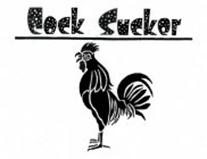
So too the association of COCK SUCKER with a poultry-themed product does not diminish the vulgar meaning—it merely establishes an additional, non-vulgar meaning and a double entendre. This is not a case in which the vulgar meaning of the mark’s literal element is so obscure or so faintly evoked that a context that amplifies the non-vulgar meaning will efface the vulgar meaning altogether. Rather, the mark is precisely what Fox intended it to be: a double entendre, meaning both “rooster lollipop” and “one who performs fellatio.” . . .
We therefore see no reason why the PTO is required to prove anything more than the existence of a vulgar meaning to a substantial composite of the general public in order to justify its refusal. . . .
We recognize that there are “whimsical” and humorous aspects to Fox’s mark. But the fact that something is funny does not mean that it cannot be “scandalous.”
Toward the end of the opinion, the court attempted to offer some libertarian condolences to Ms. Fox – writing that
Nothing in this decision precludes Fox from continuing to sell her merchandise under the mark at issue. . . . If Fox is correct that the mark at issue “bring[s] [nothing] more than perhaps a smile to the face of the prospective purchaser,” then the market will no doubt reward her ingenuity. But this does not make her mark registrable.
Left unsaid is that, based upon the results of this decision, the market will also copy her ingenuity.
As an aside, the nice thing about the rule against scandalous marks is that you never have to worry about trademark infringement when cursing up a storm.
H.R. 6621 has passed in the House
Yesterday evening, the House of Representatives passed H.R. 6621, titled “To correct and improve certain provisions of the Leahy-Smith America Invents Act and title 35, United States Code.” The vote was 308-89. For the bill to become law, the Senate would need to take affirmative action before its December recess.
CLS Bank v. Alice Corp: Software Patentability On the Briefs
by Dennis Crouch
Briefing continues in the CLS Bank software patent case. The accused infringer (CLS Bank) has filed its brief arguing that the Alice patent lacks any core inventive concept and therefore lacks subject matter eligibility under Section 101 of the Patent Act. Briefs in support of CLS and those nominally in support of neither party have also been filed. Alice will file its brief in January and I expect a set of additional briefs in support. As in the Bilski case, Alice's asserted claim here is one that appears invalid on other grounds — namely obviousness. However, the district court ruled on summary judgment (and before claim construction) that the claim was invalid as lacking patent eligiblity under Section 101.
The text of the asserted claim is below:
A method of exchanging obligations as between parties, each party holding a credit record and a debit record with an exchange institution, the credit records and debit records for exchange of predetermined obligations, the method comprising the steps of:
(a) creating a shadow credit record and a shadow debit record for each stakeholder party to be held independently by a supervisory institution from the exchange institutions;
(b) obtaining from each exchange institution a start-of-day balance for each shadow credit record and shadow debit record;
(c) for every transaction resulting in an exchange obligation, the supervisory institution adjusting each respective party's shadow credit record or shadow debit record, allowing only these transactions that do not result in the value of the shadow debit record being less than the value of the shadow credit record at any time, each said adjustment taking place in chronological order; and
(d) at the end-of-day, the supervisory institution instructing ones of the exchange institutions to exchange credits or debits to the credit record and debit record of the respective parties in accordance with the adjustments of the said permitted transactions, the credits and debits being irrevocable, time invariant obligations placed on the exchange institutions.
In its first opinion, the Federal Circuit reversed the lower court ruling – finding that the claim did not merely encompass an abstract idea but instead embodied a practical implementation that fits within the scope of patent eligible subject matter. In a subsequent en banc order, the court asked that the parties focus on two particular questions of law:
I. What test should the court adopt to determine whether a computerimplemented invention is a patent ineligible “abstract idea”; and when, if ever, does the presence of a computer in a claim lend patent eligibility to an otherwise patent-ineligible idea?
II. In assessing patent eligibility under 35 U.S.C. § 101 of a computerimplemented invention, should it matter whether the invention is claimed as a method, system, or storage medium; and should such claims at times be considered equivalent for § 101 purposes?
I have attempted to extract some core elements of each brief. I should note that all of these brief have much more nuance than is shown. I attempted to categorize the briefs filed on behalf of neither party. My approach was quite subjective and I am confident that others would have classified them in a different manner.
Practical keys here are (1) whether subject matter eligibility is about the inventive concept or instead more focused on the scope of a well construed claim; (2) invention
Party Brief:
In Support of CLS (Defendant)
-
File Attachment: BSA Software Alliance–ISO CLS.pdf (169 KB) Business Software Aliance believes that software should be patentable, but not the software at issue here.
"Simple economics makes clear that, if patent protection for software were curtailed, the adverse consequences would be swift and severe. . . . Two factors are of particular significance—whether a claim can be implemented solely via a mental process or necessarily relies upon a machine for execution; and whether the claim uses an abstract idea or law of nature in a way that is novel, useful, and limited. When an invention falls short under both of these standards, it most likey is not patentable under Section 101. . . . Assessed under this framework, the software at issue here is not patentable. . . . It is plain that credit intermediation long preexisted computer implementation, and that it is a process that can be performed in the human mind, or by a human with pencil and paper. In addition, the computer aspect of the claims here does not add anything of substance to the mental process at issue. The computer implementation of the abstract idea is not limited in any fashion. And there is no suggestion that the process here is in anyway dependent upon computer technology to accomplish the directed end."
- Download EFF–ISO CLS Patents are causing more harm than benefit. This is especially true for software patents that regularly include broad functional claims. However, Section 101 analysis is problematic because of its ambiguity. The EFF brief argues that the way to cure this is to more broadly interpret 35 U.S.C. § 112(f) (2012) so that functional software claims be given limited scope under the Federal Circuit's Means-Plus-Function doctrine. This approach stems from a recent article by Mark Lemley and fits directly within the avoidance doctrine that Professor Merges and I suggested in our 2010 article.
- File Attachment: CCIA–ISO CLS.pdf (200 KB) Prometheus requires an inventive concept to pass 101.
- File Attachment: Clearing House Ass'n–ISO CLS.pdf (819 KB) Banking industry brief argues that "threshold" language means that "the Section 101 inquiry is the first step in the legal framework to determine patentability" and should be rigorously enforced.
- File Attachment: Google et al.–ISO CLS.pdf (982 KB). Google acknowledges the difficulty with the abstract idea test because the term "abstract" is so difficult to define. However, Google argues that the abstract ideas are much easier to identify individually than to define generally. This is roughly the same as know-it-when-you-see-it test for obscinity. Google also writes that "abstract patents are a plague on the high-tech sector."
- File Attachment: Stites Amicus Brief.pdf (262 KB) "The software patent game is a less than a zero sum game for the participants and has a large inhibiting effect on software innovation." Stites argues that the court should simply eliminate software patents.
In Support of Neither Party, but Promoting a Stronger § 101 Requirement
- File Attachment: British Airways et al–ISO Neither Party.pdf (191 KB) Supreme Court has rejected the "course-filter" "manifestly-evident" approach offered by the original CLS panel. Whether a claim fails under Section 101 can ordinarily be determined very early in a case and without and detailed claim construction.
- File Attachment: Profs Hollaar & Trzyna–ISO Neither Party.pdf (217 KB) The only way to draw a clear and reasonable line on subject matter eligibility is to focus on its link to technology.
- File Attachment: Juhasz Law Firm–ISO Neither Party.pdf (285 KB) "The test to determine whether a computer-implemented invention is a patent ineligible "abstract idea" should be whether steps that are central to the claim (i.e., not token extra-solution activity) have a "physical" or "virtual" link to a specific real or tangible object."
- File Attachment: Koninklijke Philips–ISO Neither Party.pdf (549 KB) An applicant and patentee should have the burden of proving that the claimed software implementation is subject matter eligible.
- File Attachment: Internet Retailers–ISO Neither Party.pdf (2454 KB) Simply rewriting a method claim as a system or storage medium cannot render the claim subject matter eligible. The Federal Circuit should empower district courts to make 101 determinations very early in cases – well before claim construction or the completion of discovery. "The savings to the parties in money and the courts in time are self-evident. And those savings are more likely to be obtained in precisely those cases in which the patents are least likely to be valid or valuable, cases brought under low-quality patents. Judicious application of Section 101 is likely to winnow out the worst patents at the lowest cost."
In Support of Neither Party, but Promoting a Weaker § 101 Requirement
- File Attachment: IP Owners Ass'n–ISO Neither Party.pdf (301 KB) Software is generally patentable under Section 101. However, a claim "must describe the use of [a] computer with sufficient detail to avoid preempting other uses of the idea and the computer implementation must be a meaningful and significant element of the invention." A detailed claim construction is ordinarily necessary to determine whether that claim is directed to statutory subject matter.
- File Attachment: CLS-Bank_v_Alice_USA-amicus-ISO-Neither-Party.pdf (311 KB) See this.
- File Attachment: Sigram Schindler–ISO Neither Party.pdf (474 KB) The abstract idea test is sufficiently defined.
- File Attachment: NY IP Law Ass'n–ISO Neither Party.pdf (735 KB) Efforts in some decisions to dissect the claim into old and new parts or computer and non-computer elements, should be rejected as squarely inconsistent with the Supreme Court's holdings in Diamond v. Diehr, 450 U.S. 175 (1981), and Bilski. "NYIPLA does not agree that method, system and storage medium claims should ipso facto rise and fall together. Rather, each claim (regardless of its type) should be considered independently as a whole to determine whether it is directed to patent-eligible subject matter."
- File Attachment: IP Law Ass'n of Chicago–ISO Neither Party.pdf (1024 KB) Subject matter eligibility should be broad and flexible. IPLAC's test is similar to the government's factor's in its brief. However, the tone of the IPLAC questions suggest broader eligibility. When a claim includes a computer program, IPLAC would ask: "(a) Are the claims drawn to subject matter otherwise statutory, because if so, they do not become nonstatutory simply because they use a mathematical formula, computer program or digital computer. Diehr. (b) Are process claims, as a whole, without regard to the novelty of any element or steps, or even of the process itself, nothing more than a statutory process and not an attempt to patent a mathematical formula, because if so, they are not nonstatutory. (c) Do the claims implement or apply a formula in a structure or process which, when considered as a whole, is performing a function which the patent laws were designed to protect (e.g., transforming or reducing an article to a different state or thing), because if so, the claims are statutory. (d) Do the claims apply the laws to a new and useful end, because if so, they are statutory."
- File Attachment: Conejo-Valley-Bar-Assn–ISO-Neither-Party.pdf (1589 KB) There is no need for a strong section 101 eligibility requirement because the other sections of the patent act do the work already.
- File Attachment: IBM–ISO Neither Party.pdf (1624 KB) "In the exceptional case when the patent eligibility of a computer implemented invention is not readily apparent, the functional requirement of a computer counsels in favor of patent eligibility." Methods are different from systems and are different from storage media. As such, the subject matter eligibility issues are also different and thus, a system claim might be patent eligible while its parallel method claim may be ineligible.
H.R. 6621 Hits a Temporary Snag
Rep. Lamar Smith pushed for a voice vote today for H.R. 6621. However quick passage was thwarted by the Orange County Republican Dana Rohrabacher. Rohrabacher’s concern regards revised section (m) of the Bill that would require the USPTO to provide a report to Congress of pre-URAA cases that are still pending at the USPTO (i.e., patent applications filed prior to June 8, 1995 that are still pending at the USPTO). The particular concern is that the report would publicly identify the names of the inventors concerned and thus be contrary to the law requiring information regarding those applications be kept secret until patent issuance. It is unclear whether Smith will push for a roll call vote later this week or instead again amend the bill to mollify Rohrabacher’s concern.
CAFC Obviousness Decision Trends and KSR
By Jason Rantanen
Following up on Dennis's post earlier this morning, below I've provided a few charts showing the Federal Circuit's practice of citing KSR in its obviousness opinions. The data comes from a study of the court's post-KSR obviousness jurisprudence that I'm currently writing up; as a result, it only runs through April 30, 2012. The pattern is noticibly different from that of the BPAI/PTAB data that Dennis provided, both for all opinions involving obviousness and for just those arising from the PTO.
The first chart shows the rate at which the Federal Circuit cited KSR at least once in an opinion addressing obviousness. The rate at which the court cited KSR actually climbed a bit in 2011.
The next chart is a moving (lagged) average, which means that each point represents the average rate that the Federal Circuit cited KSR over the 20 preceding opinions. For example, the first point represents the average rate at which the Federal Circuit KSR in opinions 1-20 following KSR, the second point opinions 2-21, etc. The first data point thus corresponds with the Federal Circuit's 20th opinion on obviousness after KSR while the last data points corresponds with the Federal Circuit's 155th opinion after KSR.
The last chart follows the same format as the first chart, limited to appeals arising from the PTO.
BPAI/PTAB Obviousness Decision Trends

The vast majority of BPAI/PTAB decisions focus on the question of obviousness. Basically, the Board is reviewing whether or not an examiner's obviousness rejection is proper. I created the chart above by using a simple text search for obviousness related terms within each BPAI/PTAB merits decision during the past six years and found that roughly 80-85% of Board decisions discuss obviousness to some degree. I previously tested this methodology against an actual reading of cases and found that my automated methodology correlates quite well. The results for the percentage of obviousness decisions are in blue. A subset of those cases are found in red and represent the percentage of Board merits decisions that cite to the Supreme Court's decision in KSR Int'l Co. v. Teleflex, Inc., 550 U.S. 398 (2007). That decision was important because it changed the law of obviousness as applied by the USPTO.
Apparent from the chart is the fact that the BPAI/PTAB is citing KSR much less frequently in 2012 than it did in 2008-2009. My hypothesis is that a smaller percentage of applicants are fighting about the law of obviousness and more are now focused on application of that law. Mixed into this is the reality that the Board is also writing shorter opinions — leaving less room for pesky citations.
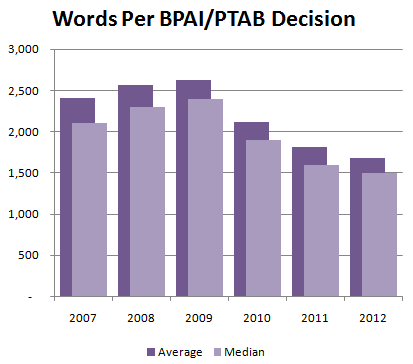
Apple v. Samsung: Court Denies Permanent Injunction and Allows Samsung to Continue Selling Infringing Devices
By Dennis Crouch
File Attachment: Apple_Samsung_Injunction_Denied.pdf (145 KB).
If the Apple-Samsung patent infringement lawsuit had been litigated back in 2005, the parties would have likely settled by now. Ebay changed that calculus and now an adjudged infringer such as Samsung can afford to push cases and appeals further because there is little downside risk that a US court will actually force the company to stop distributing its well known and respected products.
In an order on December 17, 2012, Judge Koh denied Apple’s motion for permanent injunctive relief to stop Samsung from continuing to infringe Apple’s patents and trade-dress. Thus, Apple must be satisfied with the payment of money damages. Although major, the ruling is not unexpected since based both on the law (eBay) and the fact that the court previously denied Apple’s motion for preliminary injunctive relief based upon Apple’s failure to prove irreparable harm.
In order to be eligible for injunctive relief the prevailing party must show that it will suffer irreparable absent an injunction. A key to current irreparable harm doctrine is proof of the nexus between the infringement and the irreparable harm. I.e., that infringement of the particular features or designs protected by the patent right (as opposed to some other factor) will cause the loss of market share. Unlike infringement and damages, the issues associated with injunctive relief are all seen as equitable issues and therefore decided by the judge rather than a lay jury.
Here, Apple alleged three irreparable injuries: “(1) loss of market share; (2) loss of downstream and future sales; and (3) injury to Apple’s ecosystem.” The court found apple had proven injury, but apple failed to prove the causal nexus between the particular adjudged infringing acts and the irreparable harm. As it turned out, Apple did not even present an analysis of alleged harm on a claim-by-claim or even a patent-by-patent basis. In considering this, the court found that Apple’s had not proven that any of “its three [infringed] design patents covers a particular feature that actually drives consumer demand.” The same problem existed with the utility patent that was found infringed. Rather Apple’s proof was “simply too general.”
Many factors go into making a product easy to use, but the features for which Apple is asserting patent protection are very specific. A consumer may want a phone that is easy to use, but this does not establish that a tap-to-zoom feature, for example, or any given type of gesture, is a driver of consumer demand. Thus, Apple’s evidence of a survey showing the importance of ease of use as a general matter, PX 146.6, does not establish that infringement of any of Apple’s patents caused any harm that Apple has experienced. To establish the required nexus, Apple must make a showing specific to each patented feature. This, Apple has not done.
Without establishing a causal nexus between the proven harm and the proven infringement there is no room for justifying injunctive relief. Therefore Judge Koh denied relief. Apple has an immediate right to appeal this decision to the Federal Circuit even as the district court continues to decide additional post-verdict motions. To be clear, this is a major win for Samsung, but Apple still has a right to appeal and is sitting on a $1 billion verdict.
The court has also released its reasoning for denying the Samsung motion for new trial based upon juror bias. The motion was based primarily on interviews given by the jury foreman (Velvin Hogan) after the verdict. Samsung alleged that Hogan was biased and had lied during voir dire. File Attachment: Apple_Samsung_New_Trial_Denied.pdf (130 KB).

![6a00d8341c588553ef017c34cf3367970b-pi[1] 6a00d8341c588553ef017c34cf3367970b-pi[1]](https://cdn.patentlyo.com/media/images/2012/12/6a00d8341c588553ef017c34cf3b69970b-500wi.jpg)
